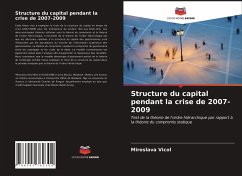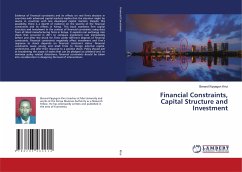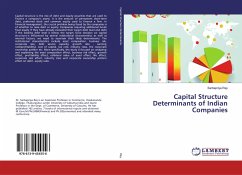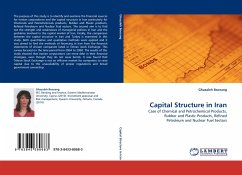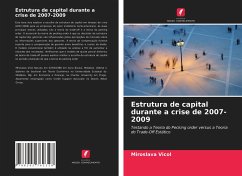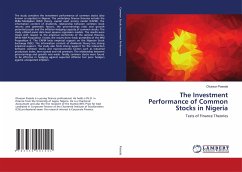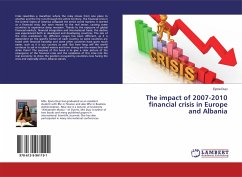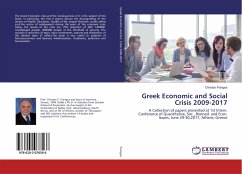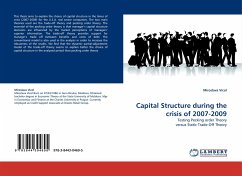
Capital Structure during the crisis of 2007-2009
Testing Pecking order Theory versus Static Trade-Off Theory
Versandkostenfrei!
Versandfertig in 6-10 Tagen
32,99 €
inkl. MwSt.

PAYBACK Punkte
16 °P sammeln!
This thesis aims to explain the choice of capital structure in the times of crisis (2007-2009) for the U.S.A. real sector companies. The two main theories used are the trade-off theory and pecking order theory. The essential of the pecking order theory is that manager's capital structure decisions are influenced by the market perceptions of managers' superior information. The trade-off theory provides support for manager's trade off between benefits and costs of debt. The conventional model is also used in the analysis in order to increase the robustness of the results. We find that the dynami...
This thesis aims to explain the choice of capital structure in the times of crisis (2007-2009) for the U.S.A. real sector companies. The two main theories used are the trade-off theory and pecking order theory. The essential of the pecking order theory is that manager's capital structure decisions are influenced by the market perceptions of managers' superior information. The trade-off theory provides support for manager's trade off between benefits and costs of debt. The conventional model is also used in the analysis in order to increase the robustness of the results. We find that the dynamic partial-adjustment model of the trade-off theory seems to explain better the choice of capital structure in the analyzed period than pecking order theory



